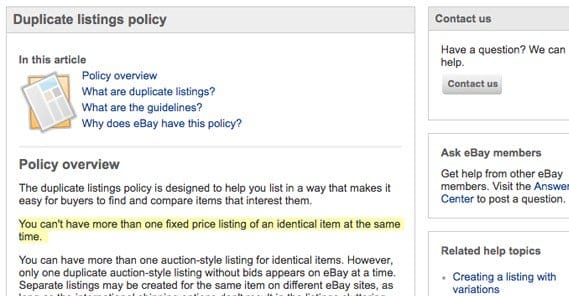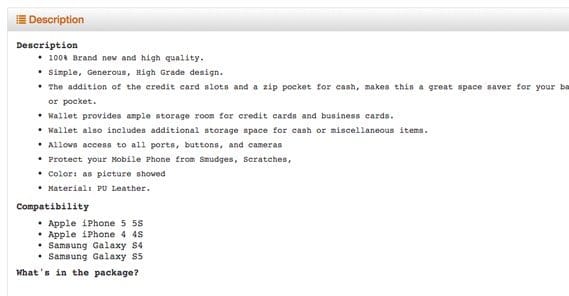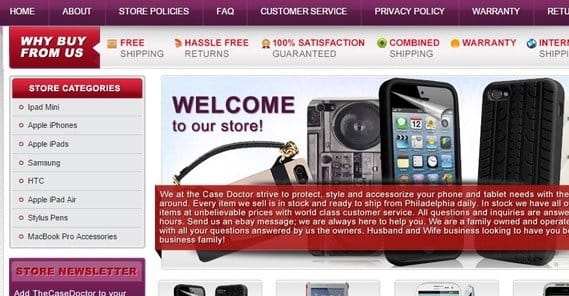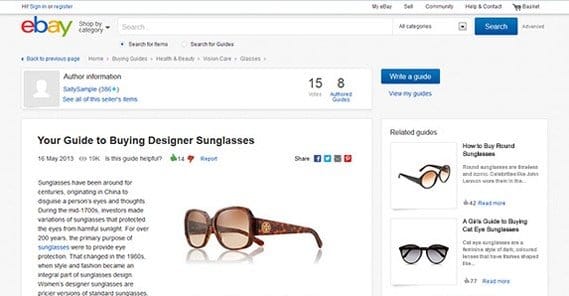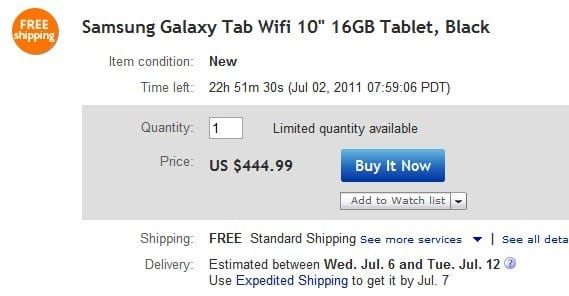33+ Ways to Get More Sales on Your eBay Listings
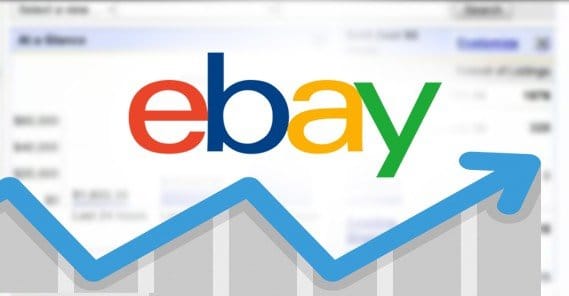
The world of eBay is ruthless, cutthroat, and full of scammers. It’s also a great place to buy and sell goods, from new electronics to prepaid cards to vintage clothing and everything else under the sun. Unfortunately, if you’re getting started now, you’re already at a disadvantage. There are probably established sellers in your niche, and it’s hard to compete with someone who has years of experience and tens or hundreds of thousands of feedback. If you want to get ahead, you need to do everything in your power to optimize your position and make use of every loophole, social exploit, and system in place to get an advantage.
Here are my accumulated best tips:
Learn How Cassini Works
First of all, know that a lot of standard SEO work isn’t quite accurate on eBay, because they use their own proprietary search engine called Cassini. You can read about how it works, as well as details on the way search worked prior to the Cassini upgrade, on the official blog of the VP of search for eBay here.
Set the Right Category
Category is important for showing up in eBay search. People often limit their searches by category, and also the search engine will devalue your listing if it’s in a clearly incorrect category.
It’s a simple thing to do, and you’re not going to gain any value by listing yourself incorrectly.
Put Keywords in Titles
Generally, your keyword is going to be the name of your product, or some specific identifier like a serial number if the name can refer to too many things. Putting this front and center in the title is not just a good idea; it’s practically required to be found anywhere near the front page of search results.
Put Keywords in Descriptions
Your description is very flexible; it’s essentially a miniature webpage for you to put all the information and details you want. This is where all of the possible relevant keywords should be worked in. Product name, color, serial number, release date, anything else that could be important to someone who wants to find that product should be right there, in text. Don’t make the mistake of putting critical information in an image only; it won’t be indexed and won’t benefit you.
Use Shorter, Punchier List Descriptions
Avoid the word wall. You’ll notice that this article is a series of short tips with headings; your description should be equally spaced out. If all of your information is crammed in one big paragraph, people will glaze over and look for a better description in the same item, even if the price is a little higher.
Link to Other Listings in Your Description
While eBay has some related search and related seller information, you can explicitly link to other products and listings in your description.
This gives you precise control rather than relying on an algorithm to pick the right items. Link to the most relevant items, like accessories, similar alternatives, and supplies.
Minimize Colors and Highlights
Having some color in your description is fine, but if you look like a child took a highlighter to your description and went over each line of text in a different color, you’re going to have a bad time. These overly colorful entries tend to come from scammers or from people who don’t know any better, and are used as a distraction. Limit yourself to only 1-2 colors outside of your images.
Use More Images
Speaking of images, use more of them. I don’t care if all you’re selling is a prepaid Playstation Network game card; use more images. Pictures of the card, pictures of the PSN logo, pictures of a recent game; use whatever it takes to sell.
Take Higher Quality Images
Product images in particular should be high quality. The site will provide automatic thumbnails and the ability to zoom, so provide an image that’s at least 1600 pixels so that there’s plenty of detail for users to zoom into.
Take pictures of any relevant detail, like the ports on a computer, the scratches on a used item, serial numbers, and the like.
Use an Image Gallery Format
In addition to the images supplied in the listing, you can have additional images in a gallery below. In particular, this is useful for the related listings, with one thumbnail each. Images make everything more attractive, so long as you’re using them properly.
Edit Images to Improve Appeal
Don’t be afraid to take to Photoshop to improve your images. Blank out the background to pure white, minimize noise from a slightly blurred camera, sharpen some details, make the colors more vibrant. Anything you can do to enhance the picture, do, unless it’s changing a crucial detail that would misrepresent the product.
Use eBay Picture Services
eBay picture services is their system for uploading images and displaying them with zoom on the page. Use this for your most important product images. This makes sure they load properly, render properly, and can be displayed properly. If you embed them from an outside domain, you can have loading and rendering issues.
Don’t Make Duplicate Listings
One of the common spam techniques in the old days, before the new search engine, was to make a dozen duplicate listings for the same products using slightly different keywords.
The search wasn’t smart enough to filter them, so they might all be listed at once, driving out smaller sellers. This no longer works, and in fact listing the same item multiple times can get you penalized.
Avoid Common Scams
There are a lot of scams on eBay, so study how they work and make sure you don’t even look like you might be leading one. Things like a tiny footnote about how you’re buying a photo of the item rather than the item, the bait and switch, anything that looks skeevy; avoid it.
Be Specific with Item Details
Item details are important for customer decision making. Provide any piece of information you think they might want. More importantly, provide information you’re asked for. If one person sends you a message asking for a bit of information, don’t just provide it; add it to your description so everyone who wanted to know but didn’t ask can still see it.
Include a Helpful FAQ
An FAQ can help minimize questions, and it’s a great place where you can add information someone might want to know or that people ask about.
Vet your questions, though, so you’re not include “frequently” asked questions that are obviously only relevant to one person in a specific situation.
Address Specific Concerns
Every item is unique and may have specific concerns attached to it. If you’re selling silver, people want to know the maker’s mark and heritage.
If you’re selling antiques people want to know if they’ve been restored. If you’re selling Rolexes or Ray Bans or whatever, people want to know they’re genuine. Address these specific concerns in your listing, don’t just use a template listing for everything.
Address Feedback
Whenever someone leaves feedback, feel free to respond. Invite detailed feedback and promote the best feedback you get. Address the concerns of negative feedback, attempting to make things right or to get them to remove it. Don’t just ask for removal, though; ask what you can do to help and only request changed feedback when the problem is resolved.
Create a Microsite to Redirect to eBay
Off-site from eBay, you can put a whole host of SEO tips into play. Make a small, rich site that acts as a distributed storefront for your various listings.
Include more details, landing pages, and all the information anyone could want. Then refer people to the site, rather than directly to your eBay listings.
Advertise Your Microsite
It’s generally not advisable to advertise a direct sales link like an eBay listing on sites like Google. Google doesn’t promote it much, eBay lists it as generally ineffective, and users don’t necessarily like being shunted directly to a product page. Instead, link them to your microsite, where they can feel like the decision to go to your listing was theirs rather than yours.
Create Product Videos on YouTube
Many products can be demonstrated or shown off via video. If you have the ability to produce clean, edited videos with good video and sound quality, go ahead and make some showing off your products. Attach those videos to your microsite, link them to your microsite, and embed them in your product listing.
Advertise on Facebook and Other Social Networks
With social media, you have the ability to really highly target your potential buyers with ads for your products. You can figure out exactly the types of people – and the people within your easy shipping area – who can buy your products. Promote your microsite to them on Facebook and watch the hits roll in. Just make sure to measure your conversion rate so you know you’re not spending more money than you’re making.
Enroll Customers in a Mailing List to Keep Active
When someone buys from you, ask them for their email address, both for support reasons and to enroll them in a mailing list. Then start to send them regular newsletters as a valued customer. Don’t spam them, though, and make sure you offer them an unsubscribe link that you honor. There are actual laws regulating email, so abide by them.
Write an eBay Guide to Link to Yourself
The site itself has a huge community resource section that some people use as product guides, some use as marketing guides, some use as information hubs and some use as blogs.
In any case, they have the weight of eBay behind them, so they have excellent potential search ranking. Write a good guide and link to your listings in the footer.
Optimize Listings for Mobile Buyers
If you’re using eBay’s default means of creating a listing, you should be set with mobile compatibility. If you’re using a third party tool or if you’re developing the HTML yourself, you’ll need to be more mindful of mobile devices. This goes double for any embedded content, like images, videos, or scripts. Mobile buyers are important; don’t alienate them.
Make Use of GTC
Good Til Cancelled is a way to maintain your sales history and watches as long as your listing is active. If it goes inactive – no sales – for 30 days, you lose it all. However, if you end the listing before the 30 days are up and re-list the items, you maintain your buyer engagement. This is particularly important for listing items that go in surges every couple of months.
Abuse Artificial Scarcity
People tend to want to rush to buy an item they think is in limited supply, because they’re worried about not being able to get it. Artificially set your quantity low – if you have 100, display that you have 3, and write your description such that it looks like you’re running out. This way the next 100 people will think they got in before everyone else and that they got a great deal.
Offer Free Shipping
If you can swing it – by which I mean if your profit margins on your items are sufficient or you have enough of a draw for repeat customers on other items – you can offer free shipping as a fringe benefit for buying from you.
One of the common “exploits” in old eBay was setting a low initial price but a high shipping cost to make up the profits. This means people are concerned about shipping costs, so free shipping is a great draw.
Accept Additional Payment Methods
The more different payment methods you’re able to accept – PayPal, payment on pickup, credit cards – the larger your potential audience. Just don’t go outside of eBay with Western Union or something strange; they won’t help you if the buyer scams you, and it scares off people who don’t want to worry about having to use an exotic payment method, even if normal methods are perfectly fine.
Set the Best Available Price
Even if you’re only the cheapest listing by 50 cents, being the cheapest still means you’re going to show up at the top of price-filtered search results. Just make sure you calculate shipping as well; eBay will display the combination price.
Offer Free Add-Ons or Additional Value
Anything you can tack on to a product to give it additional value without breaking the bank or losing your profits, go ahead and do. Additional value in the form of non-monetary items makes it harder for people to estimate the true value, so you can even charge more and get more sales.
Provide a Longer Warranty
Extended warranties can give you additional sales, particularly on high-end items like electronics that can break with use within a year or two anyways. Offering the warranty will help you out quite a bit.
Extend a 30-Day Return Policy
A return policy of any sort will help alleviate fears of you sending broken or DOA items, and a lengthy one helps people recognize that you’re willing to stand by your products and support them post-purchase.
Respond to Messages Quickly
The faster you respond to messages, the more you’ll be able to hook people who are willing to buy once they have one question answered. If you take days or longer to come back to them, you’ll lose them.
Don’t Be Afraid of Using Tools
There are plenty of tools out there for creating listings, either automatically or visually. Experiment to find one you like, but be aware that you shouldn’t be spending an excessive amount of money on them.
 ContentPowered.com
ContentPowered.com



